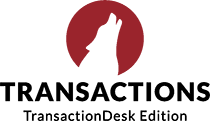Let’s start with an analogy: building a business is like building a house—if you want it to withstand the test of time, you need to start with a blueprint.
It’s not the most original analogy, but it’s timeless—and true.
Without good architecture, a firm foundation, and a solid frame, anything you build—like a business—will not last.
Real estate is at an inflection point. Consumers are hyper-connected, hyper-informed, always online, moving more than a mile a minute, and agents, brokerages, franchises, and organizations need to do more than just offer a service. They’re expected to provide satisfaction—knowledge, insight, access, information, confidence, success, and trust. That’s why real estate professionals exist.
The question is: With everything changing around them, how do real estate professionals give consumers what they want, what they need?

Real estate has scores of individual point solutions for everything you could possibly imagine—referrals, recruiting, offers, signings, listing, advertising, and more.
"Real estate doesn't need more software; it needs better."
These point solutions help solve individual problems, but many introduce as many issues as they do opportunities. They’re often incomplete, disconnected, or outdated—or some combination of all three. They aren't made for the moment.
Real estate doesn't need more software, it needs better software. It needs modern software. It needs connected software. It needs complete software.
It needs software that truly meets the demands and expectations of today's consumers—and the needs of today’s professionals.
Several years ago, we started a mission to modernize real estate software.
This involved the biggest investment we’ve ever made in our technology infrastructure, including everything from data centers and internal resources to people, products, and processes.
"...we’ve drawn a new blueprint—a blueprint for the future of real estate technology—and put our noses to grindstone to bring it to life."
In other words, we’ve drawn a new blueprint—a blueprint for the future of real estate technology—and put our noses to grindstone to bring it to life.
Complete, connected, secure, modern. These are the pillars of the Lone Wolf platform, a unified solution that brings the entire industry together, from the first ad to the final sign-off and commission check, to make real estate work better for all.
But that's not the whole story. Looking beyond products, beyond features, what are the elements that comprise our technology infrastructure? How are we making sure this structure will stand tall for years to come?
It all comes down to a sophisticated, solid architecture built on security, scalability, recoverability, availability, and performance.
Let’s take a closer look.

Security
In the modern digital landscape, the importance of security cannot be overstated—and we cannot overstate our commitment to protect the sensitive information of our customers and their clients. We don’t just help you run your business; we help you protect it, too.
We’ve obtained SOC2 reports since 2021 for multiple products and are in the process of adding additional products to our SOC2 scope. This voluntary compliance standard specifies how customer data should be managed—with security, availability, processing integrity, confidentiality.
A formalized information privacy and governance committee (IPGC) oversees all information security and privacy functions. This committee is comprised of senior leadership of the organization, and risk assessments are conducted on a regular basis.
In-house IT operations perform network, infrastructure, and endpoint monitoring, and in-house security operations provide additional network, infrastructure, and endpoint oversight, augmented with managed detection and response.
Routine vulnerability scanning is performed across all assets, and specialized web application scans are conducted by internal information security personnel and external vendors. Formalized software development lifecycle (SDLC) processes are employed to ensure changes are authorized, tested, and approved prior to deployment.

Systems
A critical component of modern software development is getting high-quality code to market as fast as possible. With the advent of new delivery techniques and cloud computing, we can increase our delivery velocity exponentially.
Our hybrid data center strategy utilizes both self-hosted and cloud-hosted platforms, with primary and secondary data centers to allow for rollover in response to localized or regional outages.
We rely on multiple network providers to allow for resiliency in communications, and our cloud computing capabilities results in faster innovations, flexible resources, and economies of scale.
At Lone Wolf, we’re using the many advantages of cloud computing—with our technical capabilities in Azure and AWS, as well as multiple technical stacks, we have the advantage of being able to select the best tools for the task at hand.
We’re able to quickly spin up environments in the cloud to test new ideas or solutions, giving us unparalleled opportunities to introduce new solutions to the market—and do it faster than any other.
Going forward, cloud computing will help us pull operational metrics from our entire suite of solutions and aggregate them into meaningful KPIs for our customers, providing a significant advantage in data analytics.

Technology
We are committed to simplifying real estate, whether that’s with our tools or not. As a part of that commitment, we’ve created a developer portal, or ‘API gateway,’ that helps authorized customers and partners interface with Lone Wolf’s enterprise products. This means you can connect your own tools, be they proprietary or simply preferred, to your Lone Wolf applications and still benefit from the complete and connected experience embedded in our end-to-end industry platform.
Each of our applications are designed with resiliency and load balancing in mind, and features are implemented alongside encryption technologies that provide for network level and at-rest encryption needs, and next generation firewalls that provide robust intrusion detection and intrusion prevention capabilities.
This is the blueprint.
A strategy, an aspiration, a foundation you trust: A modern tech architecture that is faster, simpler, stronger, and mobile—one that takes lessons from the moments that have passed, meets the demands of the present moments, and prepares you for the moments yet to come.

